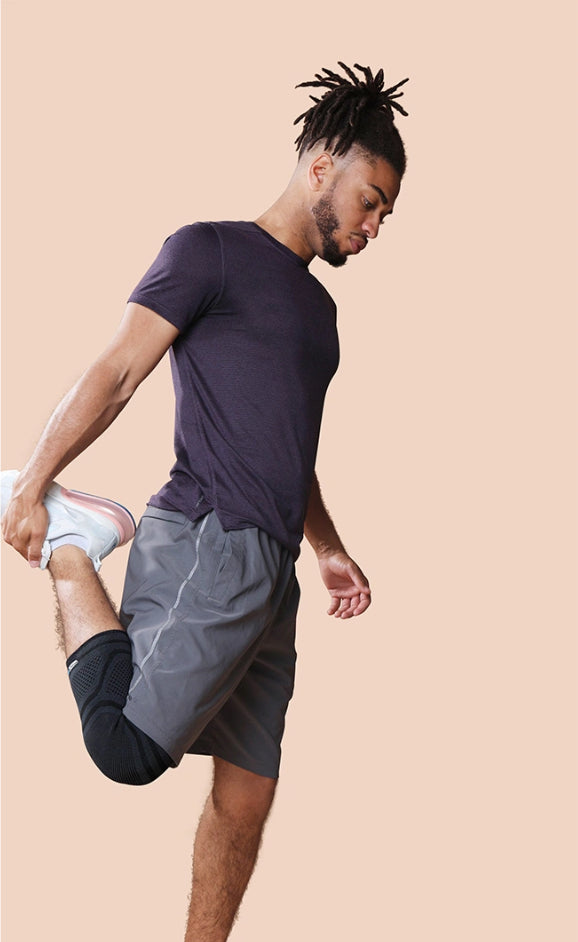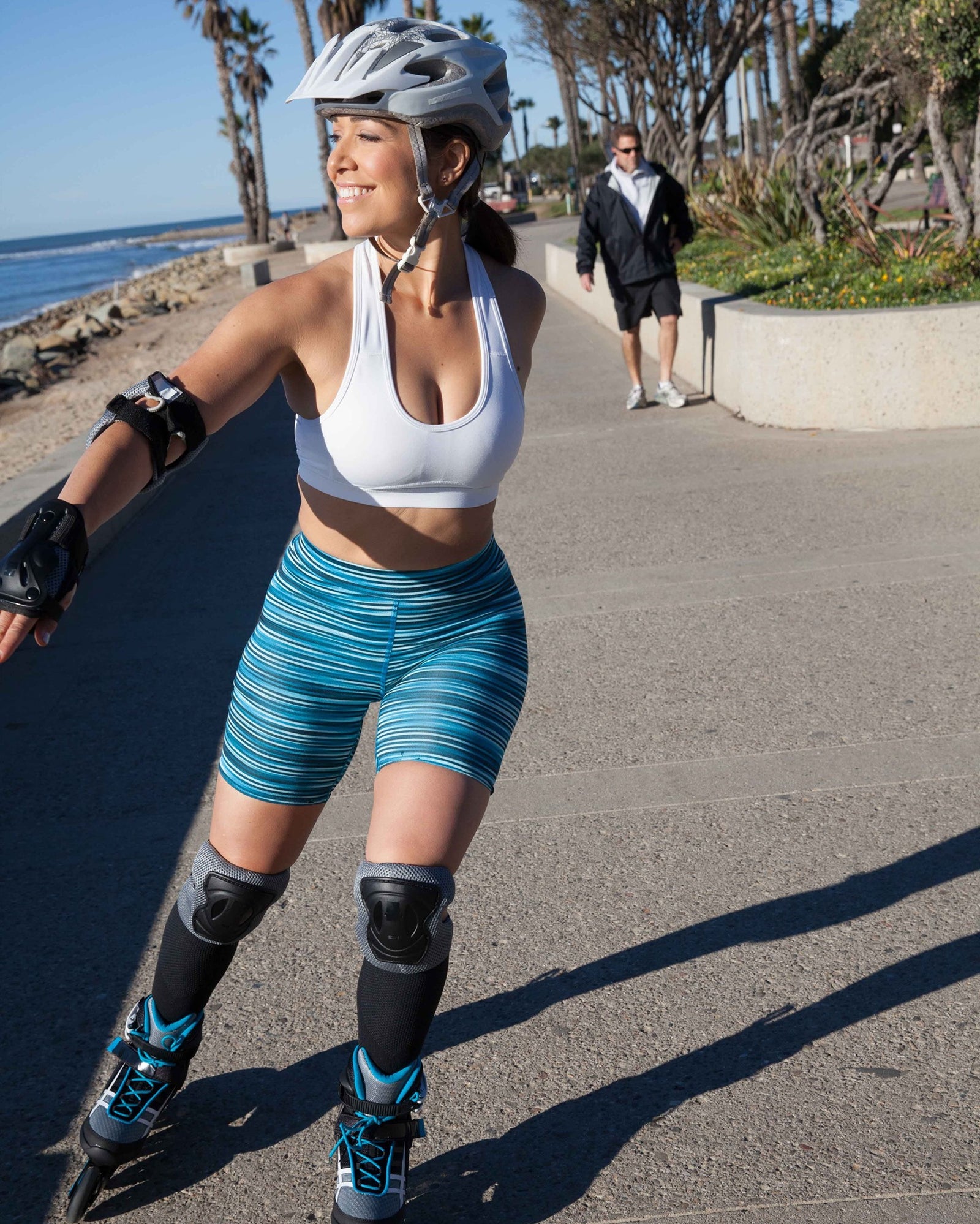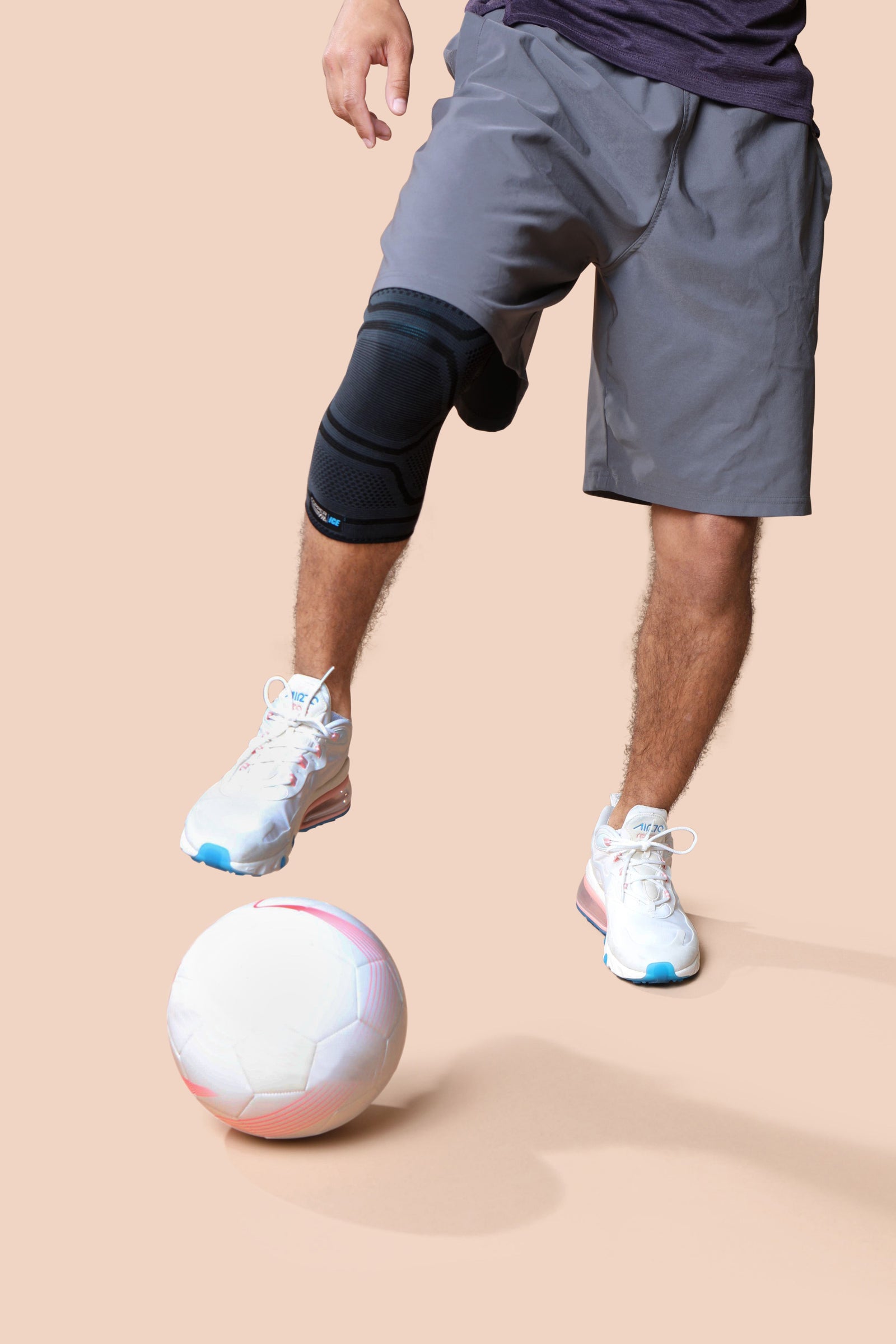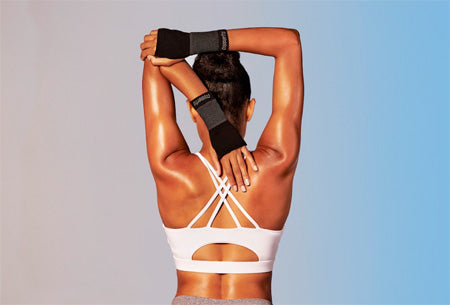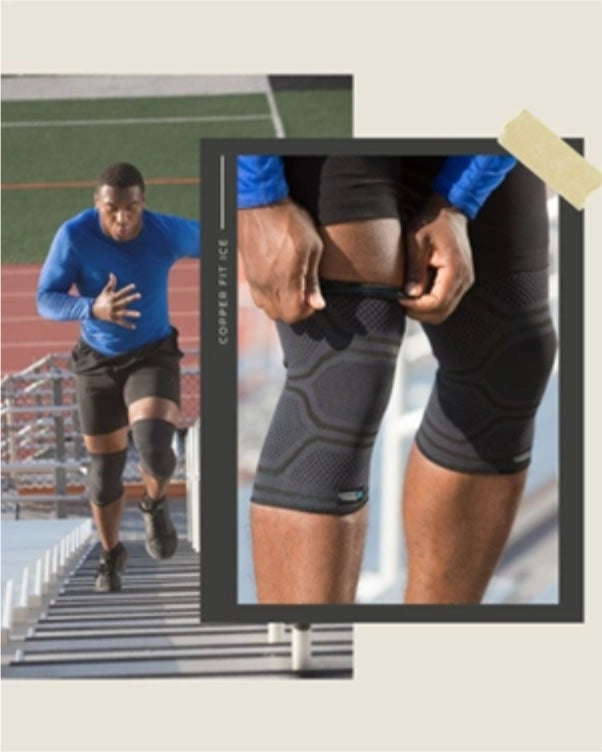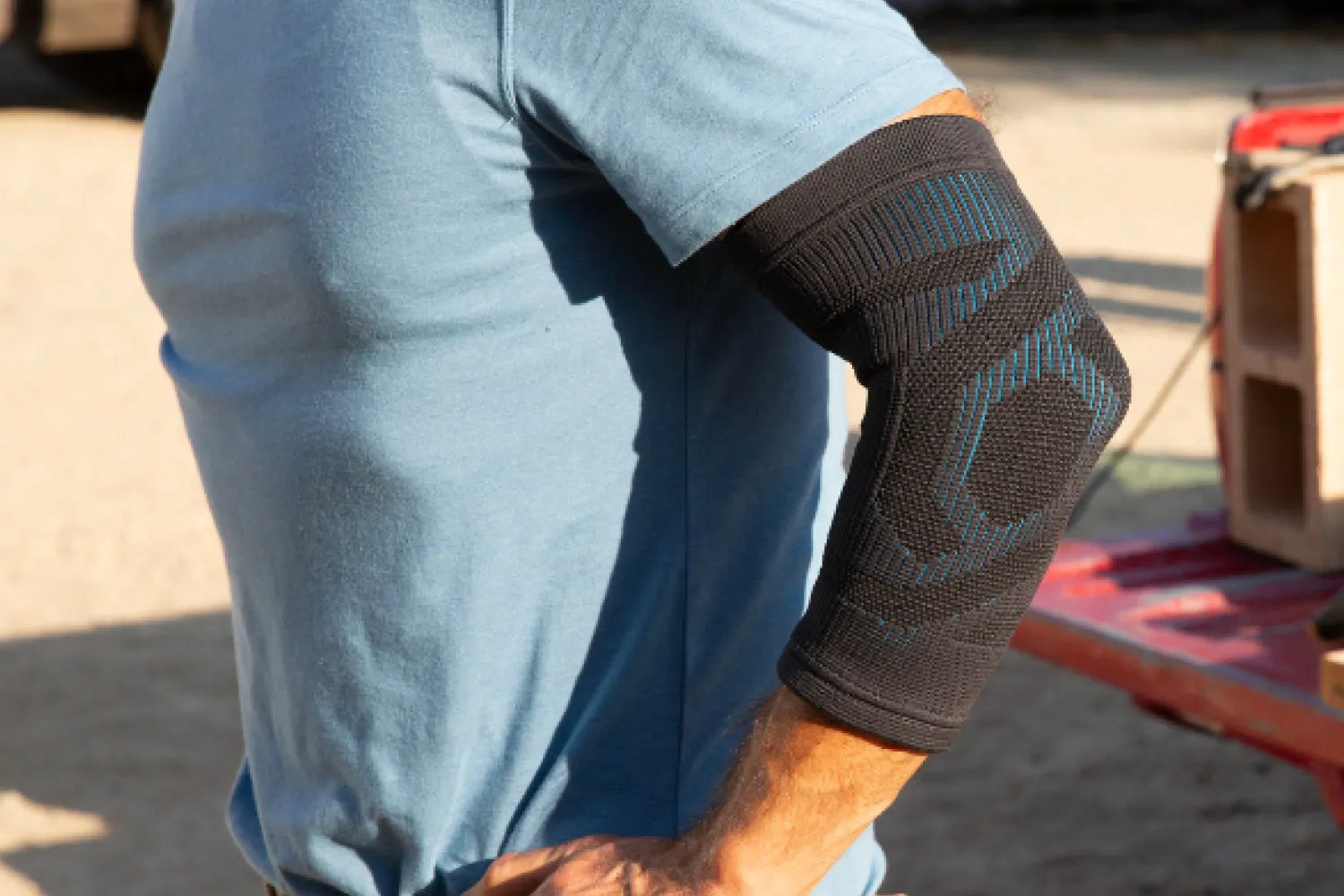
Key Takeaways
-
Compression sleeves help support healthy circulation, muscle recovery, and overall movement, making them useful during workouts, recovery, or long hours on your feet.
-
Wearing compression sleeves regularly can help soothe discomfort and promote muscle stability, especially during repetitive or high-impact activities.
-
They’re an easy, effective way to support performance and recovery for athletes, beginners, and everyday adults who want to stay active and feel their best.
Sore arms. Tired legs. Sluggish recovery. Whether you’re just getting in the groove of your workout routine or you’ve been training for years, your body can feel the wear and tear of activity, especially without the right support.
That’s where compression sleeves come in. These simple, sleeve-style garments are more than just a trend. They’re a science-backed way to support your muscles, soothe discomfort, and keep your body moving with confidence.
We’re here to break down what arm and leg compression sleeves actually do, how they work, and how to get the most benefit from wearing them.
What Are Compression Sleeves?
Compression sleeves are elastic, form-fitting garments worn on the arms or legs. They’re typically made from breathable, stretchy fabrics designed to hug the muscles snugly without restricting movement.
Unlike braces, which are meant to immobilize or stabilize joints after injury, compression sleeves provide a more flexible level of support. Their main purpose is to apply consistent, gentle pressure to the muscles and surrounding tissue. That compression supports circulation and muscle function, whether you’re moving or recovering.
You’ll find compression sleeves for the knees, elbows, calves, and arms, with various designs depending on your activity and recovery needs. They’re lightweight, comfortable, and discreet enough for all-day wear, making them a favorite among athletes and active adults alike.
What Do Compression Sleeves Actually Do?
Let’s get to the core question: what does wearing a compression sleeve actually do for your body? A lot more than most people think.
Here’s how they work and why they’ve become a go-to for anyone who wants to feel better, move better, and stay in the game longer.
1. Encourages Healthy Circulation
One of the key benefits of compression gear is how it helps support your body’s natural circulation. The gentle pressure from a compression sleeve can help support healthy blood flow, which plays a role in muscle performance and recovery.
Good circulation helps deliver oxygen and nutrients to your working muscles while also helping to carry away waste products like lactic acid. This means your muscles may stay energized longer during activity and feel less tight or sluggish after.
2. Supports Muscle Recovery
Post-workout recovery is just as important as the workout itself. Muscles need rest, nutrients, and oxygen to rebuild and repair. Compression sleeves help support that process by promoting circulation and encouraging muscle relaxation.
People often report feeling less lingering soreness or tension after wearing compression sleeves during recovery. They’re especially useful after long runs, weight training, or even extended periods on your feet.
3. Promotes Muscle Stability
If you’ve ever felt your muscles “wobble” or fatigue quickly during repetitive movement, compression sleeves can help. That snug fit offers a subtle sense of stability, helping muscles stay aligned and supported during activity. This is especially helpful for runners, weightlifters, and anyone doing high-impact or repetitive movements.
4. Helps Soothe Discomfort and Tension
Compression can also provide a soothing sensation, especially in areas that tend to carry tension. Whether it’s from training, a long shift at work, or simply standing for hours, sleeves help ease those feelings of tightness and help your body relax as it recovers.
For some, the relief is immediate. For others, it’s more gradual. Either way, it’s a simple, drug-free way to support your body’s natural recovery rhythm.
When Should You Wear Arm or Leg Compression Sleeves?
Compression sleeves are incredibly versatile. Here’s when to wear them to get the most benefit:
During Workouts
Wearing sleeves while you’re active can help support muscles under pressure and promote healthy circulation throughout your session. Runners, lifters, and HIIT fans often wear sleeves during training to stay energized and supported.
During Recovery
You don’t have to wait for soreness to hit before you use compression gear. In fact, wearing sleeves right after a workout or even during rest days can help ease lingering tension and give your muscles that extra bit of recovery support.
At Work
If your job involves long hours of standing, walking, or repetitive movement, compression sleeves can be a game-changer. They offer support and comfort throughout the day, especially for arms, legs, knees, and calves.
And if you sit at a desk for hours, adding compression sleeves to an ergonomic office setup can provide added support for your wrists, back, or legs. They can help soothe that heavy-leg feeling by supporting circulation.
For Travel or Long Car Rides
Extended periods of sitting, like during flights or road trips, can slow circulation and make your legs feel tired or stiff. Wearing compression sleeves while you travel is a smart, simple way to support blood flow and help your body stay relaxed on the go.
Who Benefits Most from Compression Sleeves?
Compression sleeves are used by a wide range of people, and for good reason. You don’t need to be a pro athlete to benefit from the science of compression.
- Runners, cyclists, and weightlifters:For better endurance, muscle stability, and recovery support.
- Gym newcomers and beginners: To ease muscle fatigue and provide extra support while learning new movements.
- Workers on their feet all day:Like nurses, warehouse staff, delivery drivers, or retail professionals.
- Desk workers: Who sit for long hours and want to prevent leg discomfort and boost circulation.
- Travelers: On long flights or drives, where circulation may slow.
- Anyone looking to feel better while staying active:Whether you're just starting a fitness journey or trying to maintain a consistent movement routine.
What to Look for in a Quality Compression Sleeve
Not all compression gear is made equally. If you’re shopping for sleeves for the first time or replacing old ones, here’s what to look for:
- Snug, Comfortable Fit:They should feel supportive, not tight or restrictive.
- Breathable Fabric:Moisture-wicking materials help keep skin dry and cool.
- Seamless Design:Reduces friction or chafing during movement.
- Durability:They should hold up to regular use and washing.
- Added Features:Like menthol for cooling or copper infusion for odor control.
- Ease of Use:You should be able to pull them on and off without hassle.
Try a few options and pay attention to how your body feels during and after wear. The right sleeve should feel like a natural extension of your movement, not a distraction.
FAQ
What are the benefits of compression sleeves for arms and legs?
Compression sleeves can help support circulation, muscle recovery, and comfort during or after activity. They’re useful for both performance and recovery routines.
Can you wear compression sleeves all day?
Yes, as long as they feel comfortable. Many people wear them throughout the day for extra support at work, during exercise, or while recovering.
Do compression sleeves help with muscle soreness?
They may help ease feelings of soreness by supporting blood flow and promoting muscle relaxation. Wearing them post-workout is a common way to enhance recovery.
The Bottom Line
At Copper Fit, we believe everyone deserves to move with confidence, whether you’re walking into the gym, heading to work, or just trying to get through your day without feeling held back by tension or soreness.
Compression sleeves are one of the simplest tools we’ve seen make a real difference. They’re easy to wear, effective, and made to support the way your body already wants to move and recover.
If you’re ready to take recovery seriously or simply want to feel more supported in your daily routine, compression sleeves are a strong place to start. We’re here to help you keep going—stronger, longer, and with less discomfort holding you back.
Sources:
Benefits of Compression Gear | UPMC HealthBeat
Recovery after exercise: what is the current state of play? | ScienceDirect

